Markets
Why Cotton Prices Increased Last Week but Fell Back
Cotton prices rose last week but fell back due to poor export sales and increased planting. USDA reported 11.670 million acres planted, one million more than in March. Recent storms in southern Texas and drought in the Delta and Southeast threaten crops. Despite weak demand this year, lower prices and increasing Chinese demand offer hope.
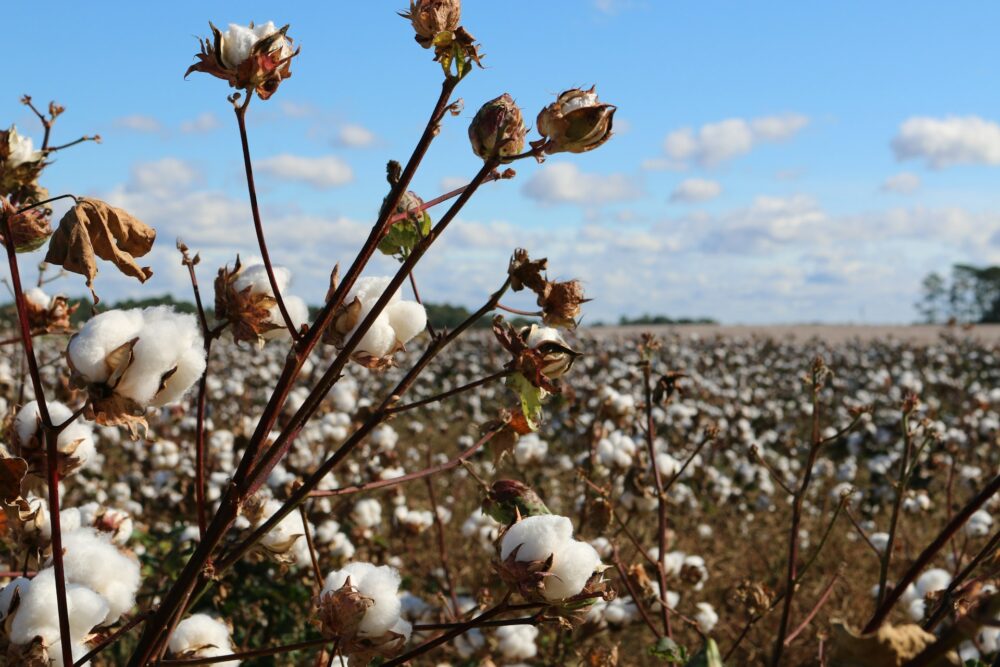
Wheat: Wheat was lower in all three markets Friday, but a little higher for the week, in reaction to the USDA reports. USDA showed that the quarterly stocks were a little higher than expected but that planted area was a little below expectations. The US harvest is expanding through Kansas and adverse world growing conditions are still around.
There were more reports of hot temperatures coming this week to Russian growing areas. It has also been very dry there. The weather is still a key, with extreme dryness reported in Russia and parts of the US and too wet conditions reported in Europe. However, US producers are reporting strong yields that exceed expectations so far and very good conditions. Big world supplies and low world prices are still around.
Weekly Chicago Soft Red Winter Wheat Futures
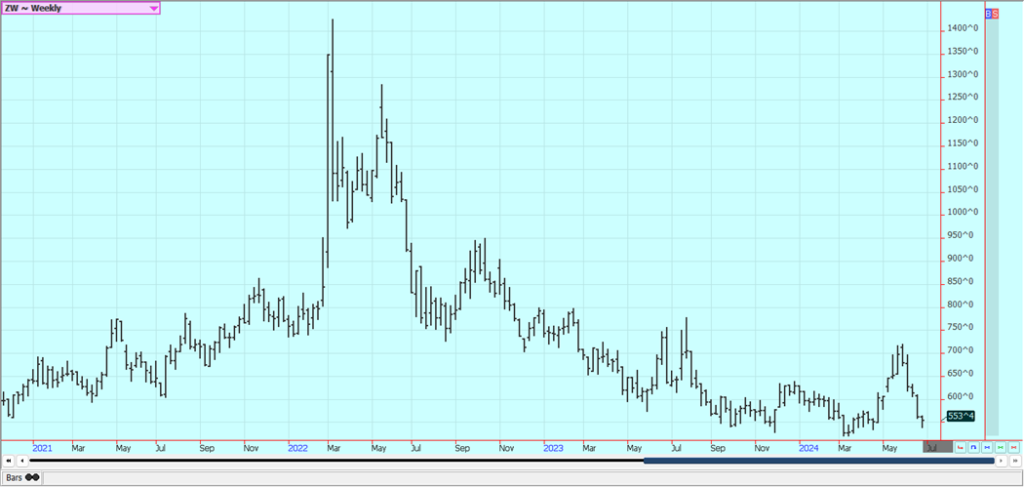
Weekly Chicago Hard Red Winter Wheat Futures
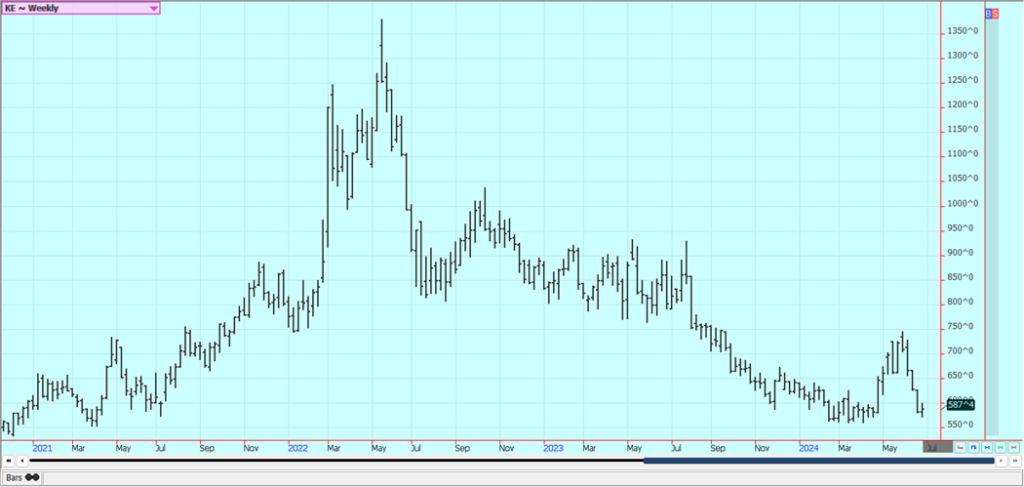
Weekly Minneapolis Hard Red Spring Wheat Futures
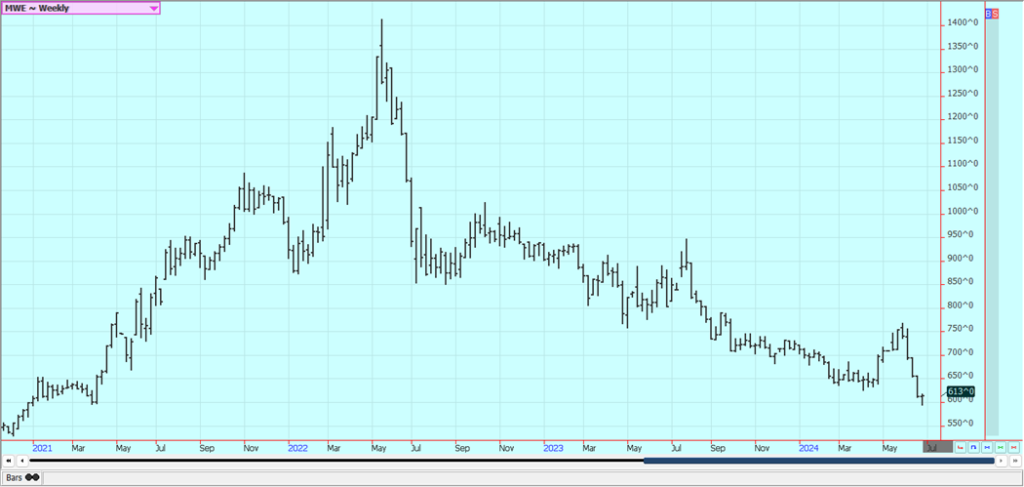
Corn: Corn closed sharply lower on Friday and lower for the week on higher than expected planted area estimates released by USDA along with sharply higher than expected quarterly stocks data. The US weather remains hot and mostly dry except for northern areas such as southern Minnesota that have had way too much rain and flooding reported.
The US Midwest is seeing uneven growing conditions and so are Southeast growing areas. However, USDA kept crop conditions high and the market sees no real problem at this time. Oats were mostly a little higher Friday and for the week on good growing conditions found in the northern US and into Canada.
Weekly Corn Futures
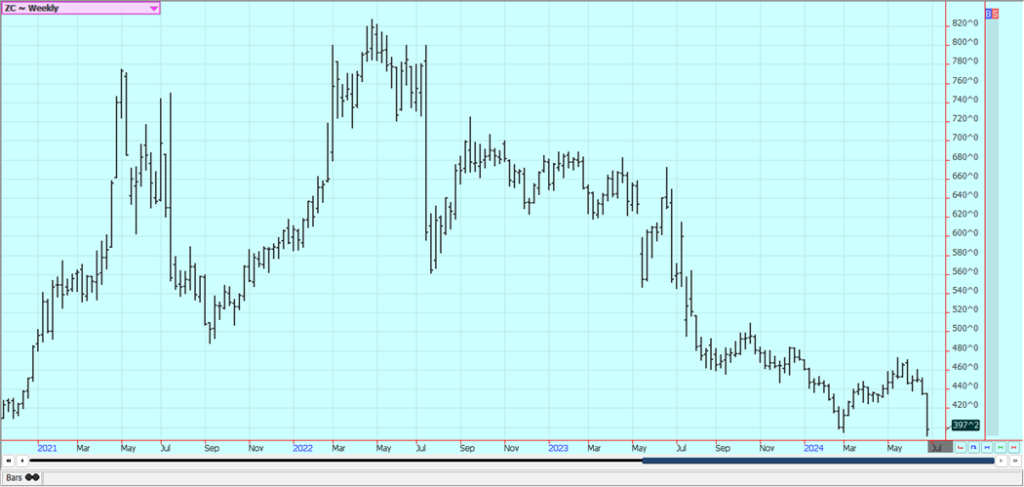
Weekly Oats Futures
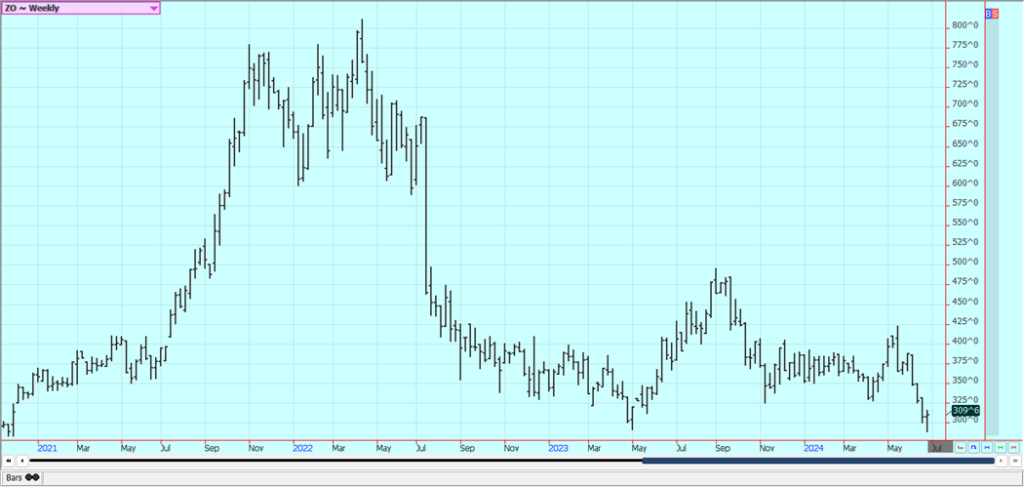
Soybeans and Soybean Meal: Soybeans closed a little lower and the products closed mixed last week in reaction to the USDA reports on Friday and despite deteriorating growing conditions in the US and on forecasts for less heat and less rain in areas that need it in the Midwest this week. USDA found less than expected plamted area and slightly more stocks than had been expected by the trade.
Precipitation chances are high in northern Midwest areas that have already been flooded. Reports indicate that China remains an active buyer of Soybeans in Brazil but has cut back and increased purchases from the US on demand due to the tax issues in Brazil and on Brazil logistical concerns. Domestic demand has been strong in the US but has suffered as crushers were crushing for oil. Oil demand has suffered as cheaper alternatives for feedstocks hit the biofuels market.
Weekly Chicago Soybeans Futures
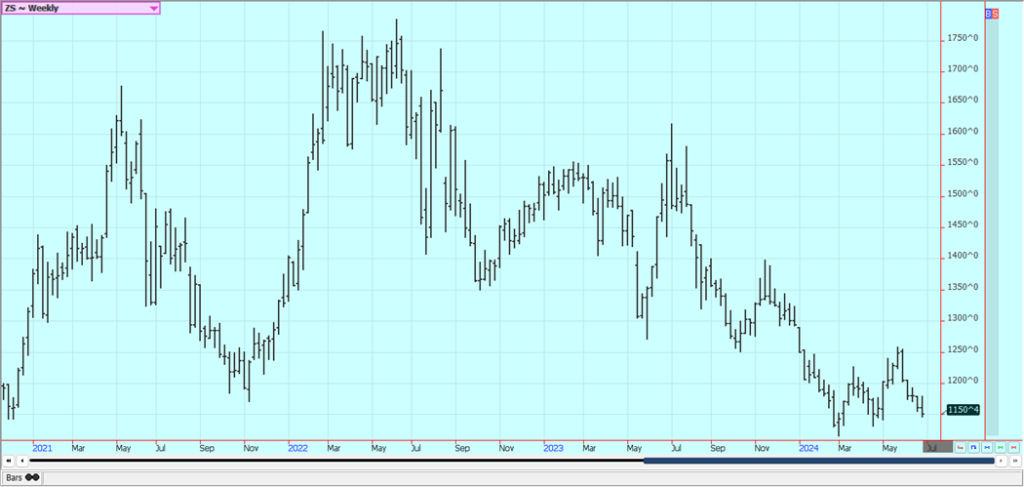
Weekly Chicago Soybean Meal Futures
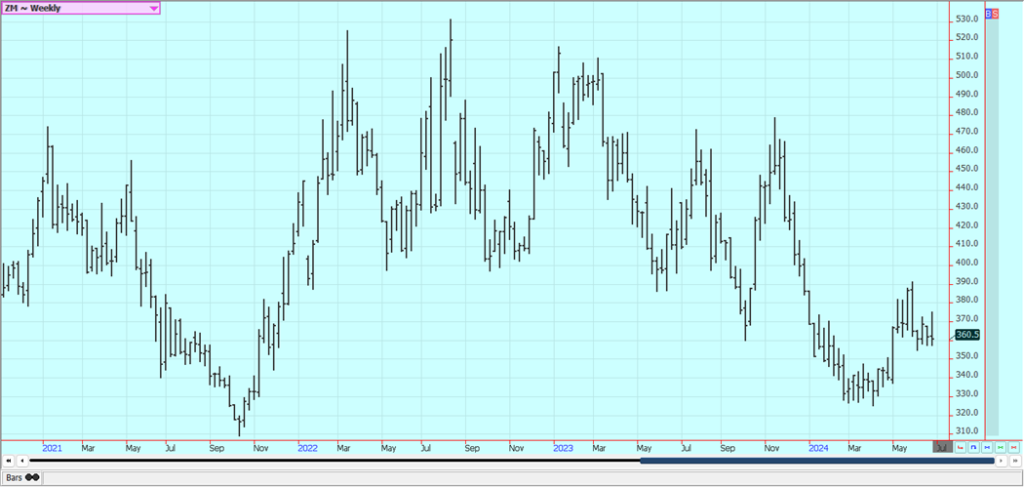
Rice: Rice closed a little lower in new crop months, but July closed higher as the contract moves into deliveries. New crop months were hurt by higher planted area estimates. The big US crops are now in doubt from reports of extreme rains in southern growing areas and especially near Houston. Supply tightness is expected to give way to increased production this year and greatly increased supplies this Fall. These ideas are reflected in the prices seen in the old crop and the new crop.
Weekly Chicago Rice Futures
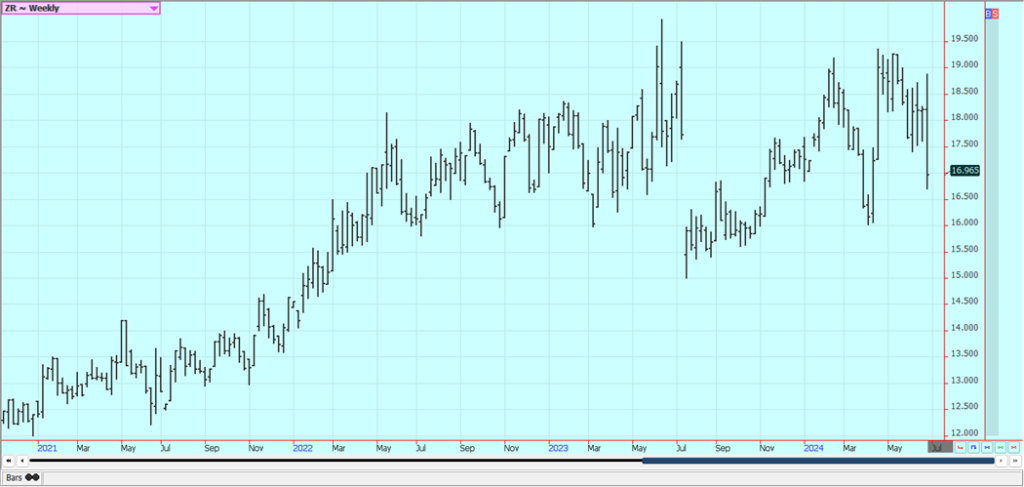
Palm Oil and Vegetable Oils: Palm Oil was higher Friday and held inside the trading range. Export demand has been very strong in recent private reports. There is talk of increased supplies available to the market, but the trends are up on the daily and weekly charts. Canola was higher Friday in range trading. The daily charts show that Canola rejected a new leg down last week and closed near the top end of the recent trading range
Weekly Malaysian Palm Oil Futures:
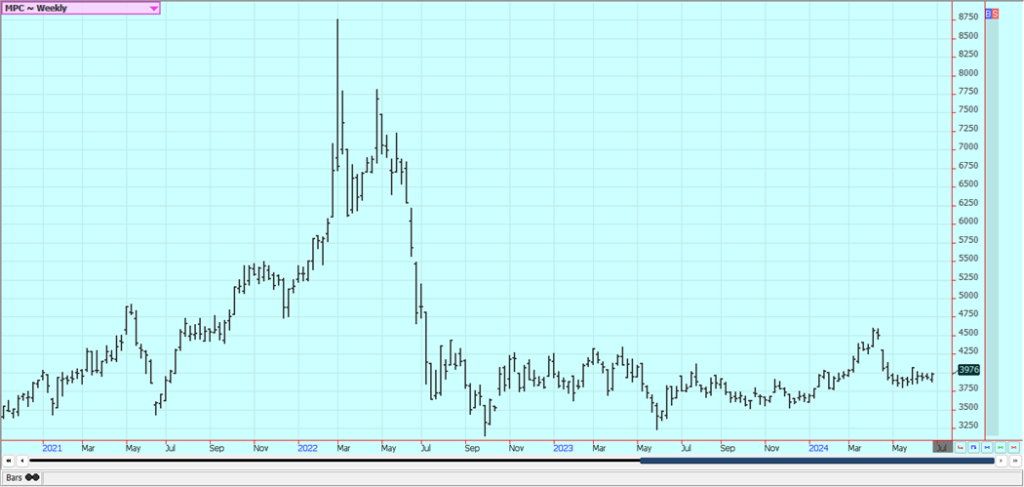
Weekly Chicago Soybean Oil Futures
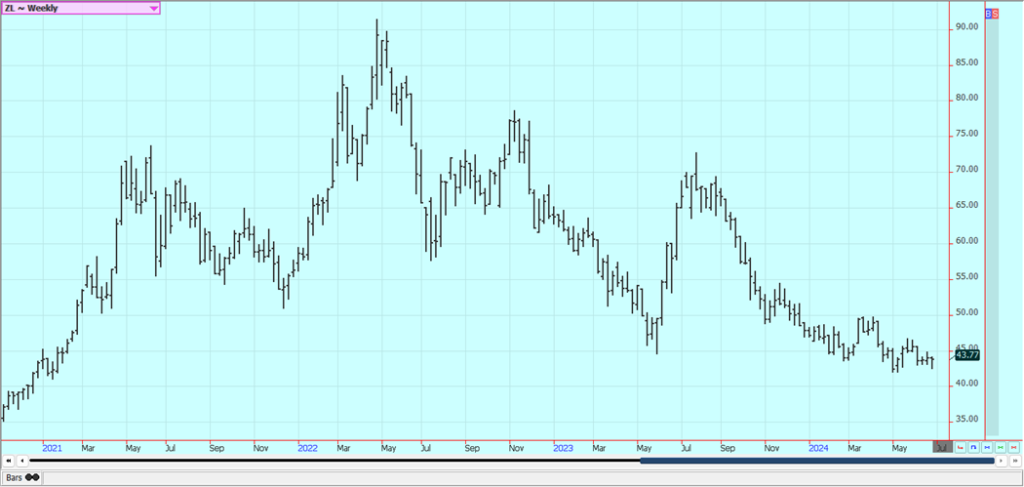
Weekly Canola Futures
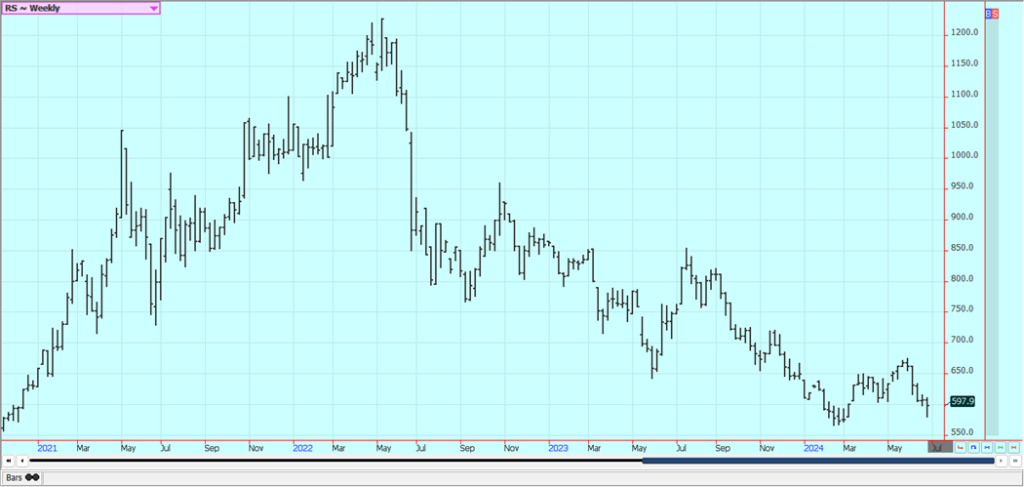
Cotton: Cotton was higher last week but gave back much of the gains of the week on a poor weekly export sales report and more planted Cotton area. USDA said that area planted to all Cotton is 11.670 million acres, about 0one million more than reported in March Big storms were reported in southern Texas in recent weeks that could damage crops. There are also some big problems with too much sun and no rain in the Delta and Southeast in recent weeks. Demand has been weaker so far this year but there are hopes for improved demand with the lower prices. Chinese consumer demand has held together well, and Chinese demand for Cotton has started to increase.
Weekly US Cotton Futures
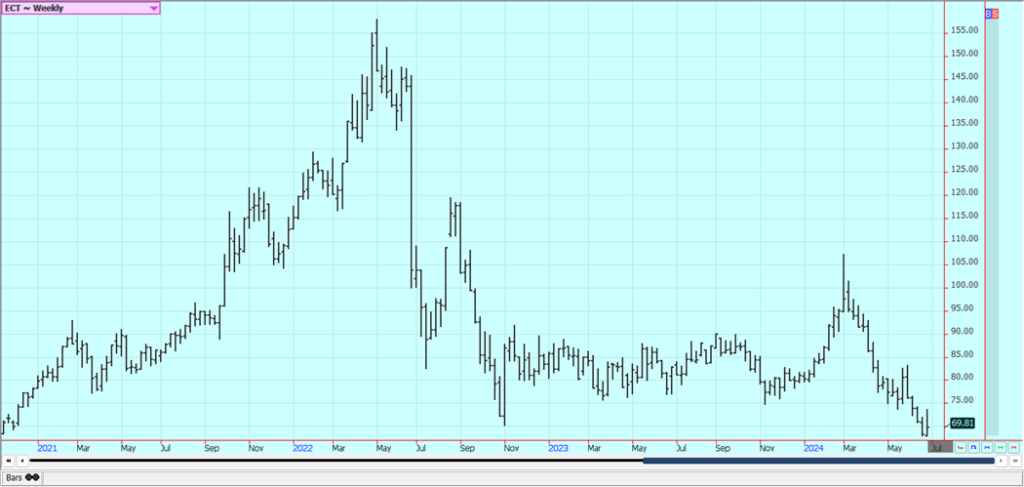
Frozen Concentrated Orange Juice and Citrus: FCOJ closed higher last week and generally remained within the current trading range. The daily charts show that the market is trying to form a bottom. The market remains well supported in the longer term based on forecasts for tight supplies and very hot weather in Florida.
The reduced production appears to be at the expense of the greening disease. There are no weather concerns to speak of for Florida or for Brazil right now. The weather has improved in Brazil with some moderation in temperatures and increased rainfall amid reports of short supplies in Florida and Brazil are around but will start to disappear as the weather improves and the new crop gets harvested.
Weekly FCOJ Futures
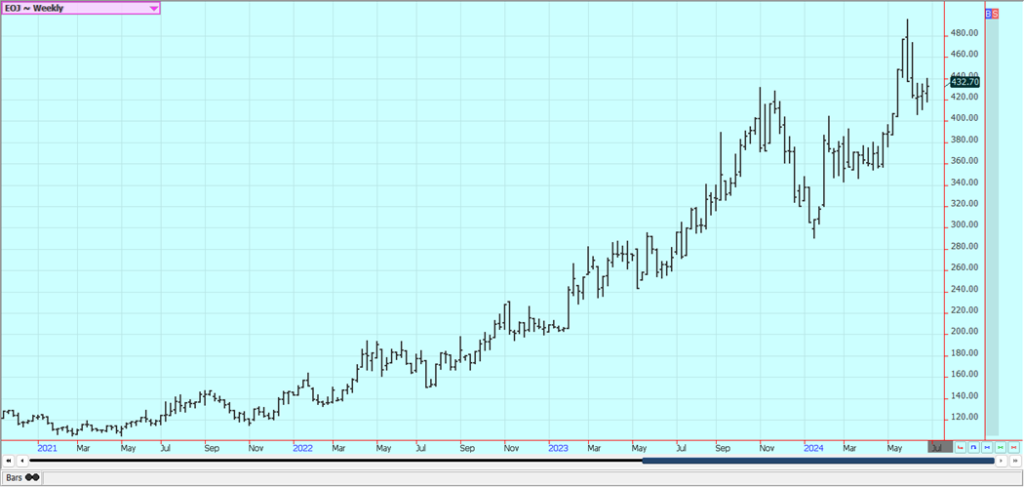
Coffee: New York closed a little higher last week and London closed a little lower as London faded from contract high resistance areas on the charts but as more reports of short supplies that could be made worse by ideas of reduced offers of Robusta are still in the market and forecasts for another couple of weeks of dry weather in Vietnam are still heard.
A little rain has been reported in Vietnam recently to help crops there. There were also reports of poor Robusta yields in Brazil during the harvest but the main focus is on the terrible conditions in Vietnam. Ideas of less production in Vietnam are driving the rally. There were indications that Brazil and Vietnam producers were now offering Coffee, buts in small amounts.
Weekly New York Arabica Coffee Futures
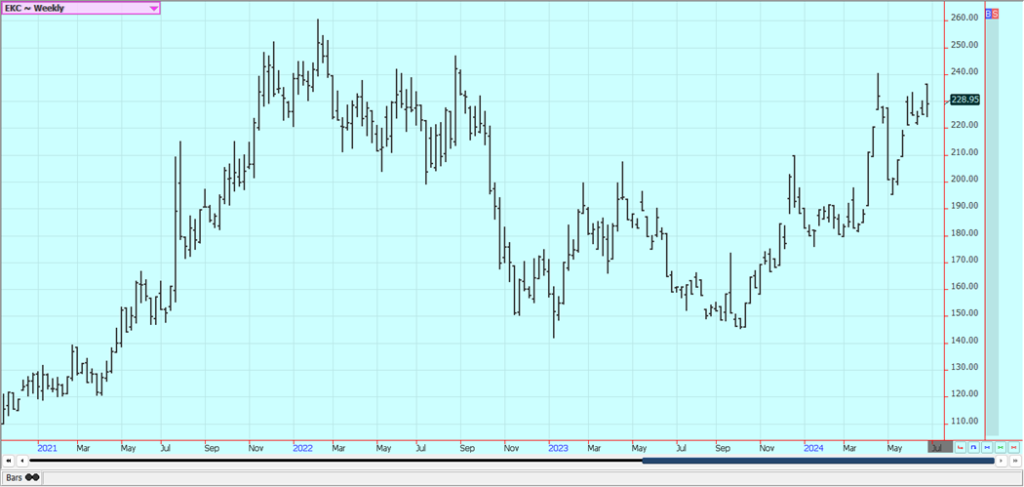
Weekly London Robusta Coffee Futures

Sugar: Both markets closed higher last week as harvest progress in Brazil was the important fundamen-tal but as world supplies remain rather tight. Ideas are that July deliveries will be large. Trends are up on the daily and weekly charts. End users need Sugar but are not finding too much available in the cash market.
There are still ideas that the Brazil harvest can be strong for the next few weeks amid dry har-vest weather, but now the cry weather is causing concern about developing Sugarcane in center south areas. Harvest weather is called good in center-south Brazil. There are worries about the Thai and In-dian production, but data shows better than expected production from both countries.
Weekly New York World Raw Sugar Futures

Weekly London White Sugar Futures
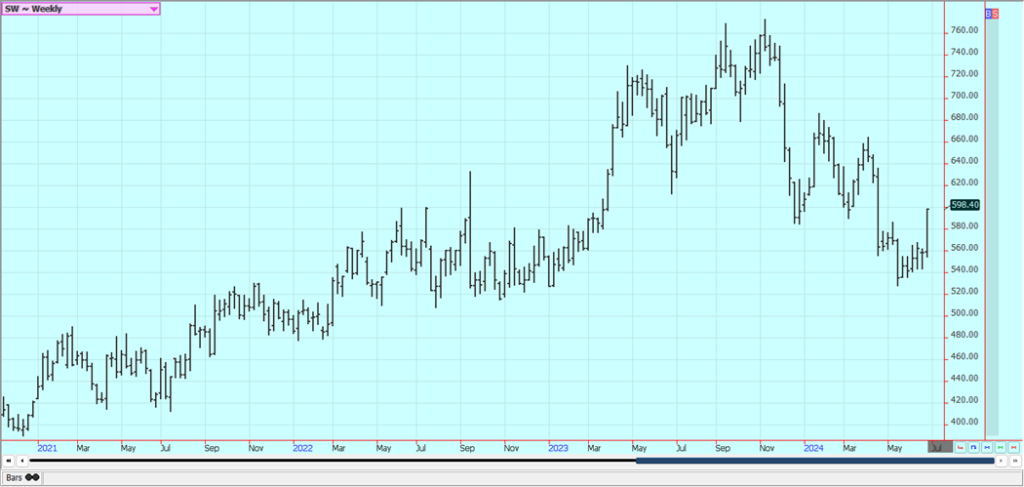
Cocoa: New York and London were lower last week on continued speculative long liquidation and chart trends are turning down. Production concerns in West Africa as well as demand from nontraditional sources along with traditional buyers keep supporting futures, but this support is running its course and the market is searching for a new bullish fundamental. Production in West Africa could be reduced this year due to the extreme weather which included Harmattan conditions. The availability of Cocoa from West Africa remains very restricted and projections for another production deficit against demand for the coming year are increasing. Ideas of tight supplies remain based on more reports of reduced arri-vals in Ivory Coast and Ghana continue.
Weekly New York Cocoa Futures
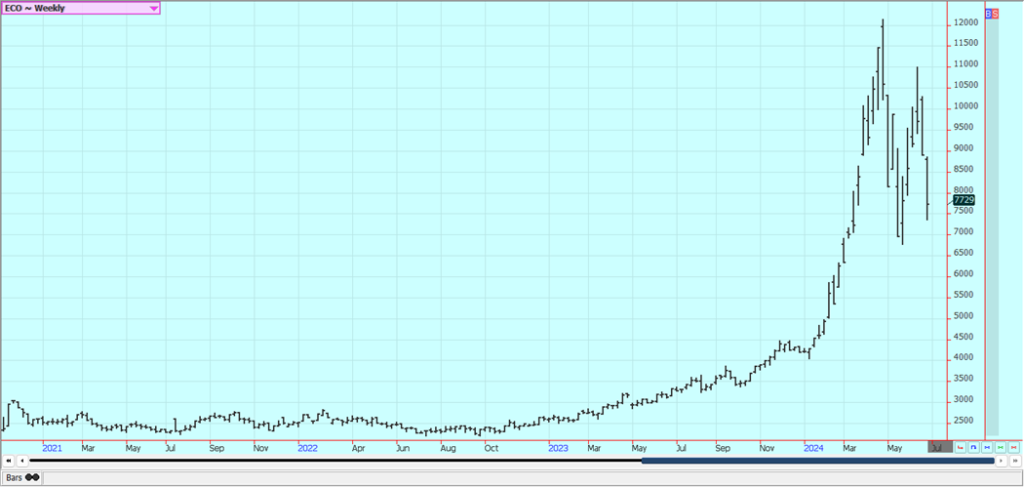
Weekly London Cocoa Futures
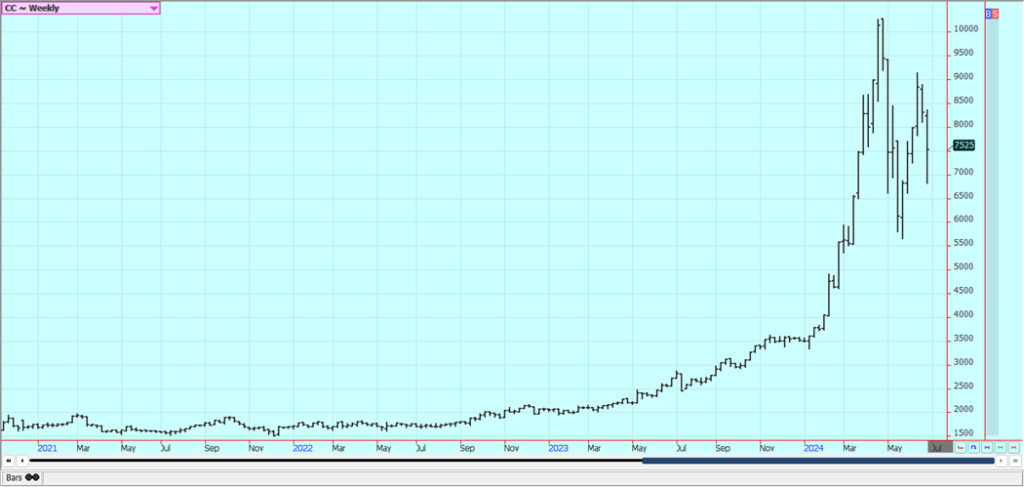
__
(Featured image by Trisha Downing via Unsplash)
DISCLAIMER: This article was written by a third party contributor and does not reflect the opinion of Born2Invest, its management, staff or its associates. Please review our disclaimer for more information.
This article may include forward-looking statements. These forward-looking statements generally are identified by the words “believe,” “project,” “estimate,” “become,” “plan,” “will,” and similar expressions. These forward-looking statements involve known and unknown risks as well as uncertainties, including those discussed in the following cautionary statements and elsewhere in this article and on this site. Although the Company may believe that its expectations are based on reasonable assumptions, the actual results that the Company may achieve may differ materially from any forward-looking statements, which reflect the opinions of the management of the Company only as of the date hereof. Additionally, please make sure to read these important disclosures.
Futures and options trading involves substantial risk of loss and may not be suitable for everyone. The valuation of futures and options may fluctuate and as a result, clients may lose more than their original investment. In no event should the content of this website be construed as an express or implied promise, guarantee, or implication by or from The PRICE Futures Group, Inc. that you will profit or that losses can or will be limited whatsoever.
Past performance is not indicative of future results. Information provided on this report is intended solely for informative purpose and is obtained from sources believed to be reliable. No guarantee of any kind is implied or possible where projections of future conditions are attempted. The leverage created by trading on margin can work against you as well as for you, and losses can exceed your entire investment. Before opening an account and trading, you should seek advice from your advisors as appropriate to ensure that you understand the risks and can withstand the losses.

-

 Africa2 weeks ago
Africa2 weeks agoMorocco’s Rising Country Risk Profile Boosts Investor Confidence
-

 Markets6 days ago
Markets6 days agoSugar Markets Cautious Amid Surplus Outlook and Steady Demand
-

 Crypto2 weeks ago
Crypto2 weeks agoRipple in 2025: Legal Victory, RLUSD Growth, and XRP’s Uncertain Future
-

 Crowdfunding6 days ago
Crowdfunding6 days agoCrowdfunding Grants Open for Business Projects Until January 2026
























